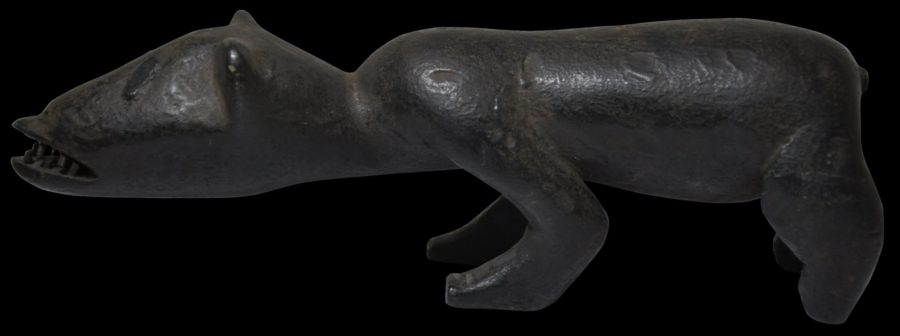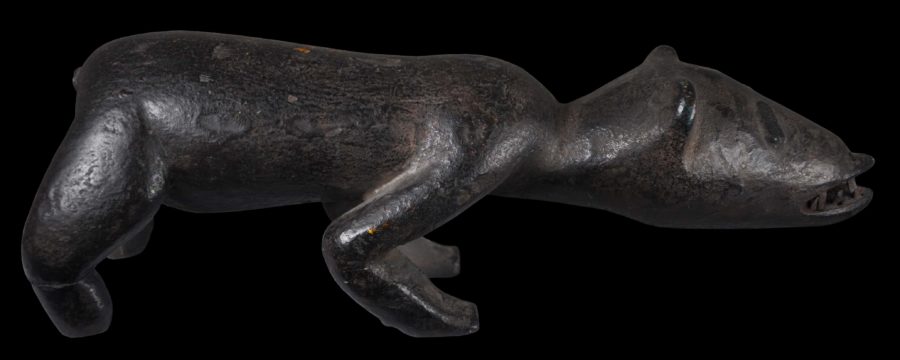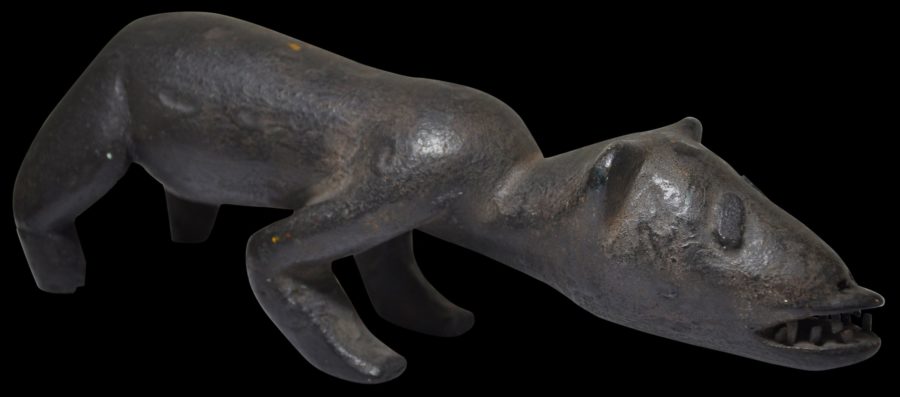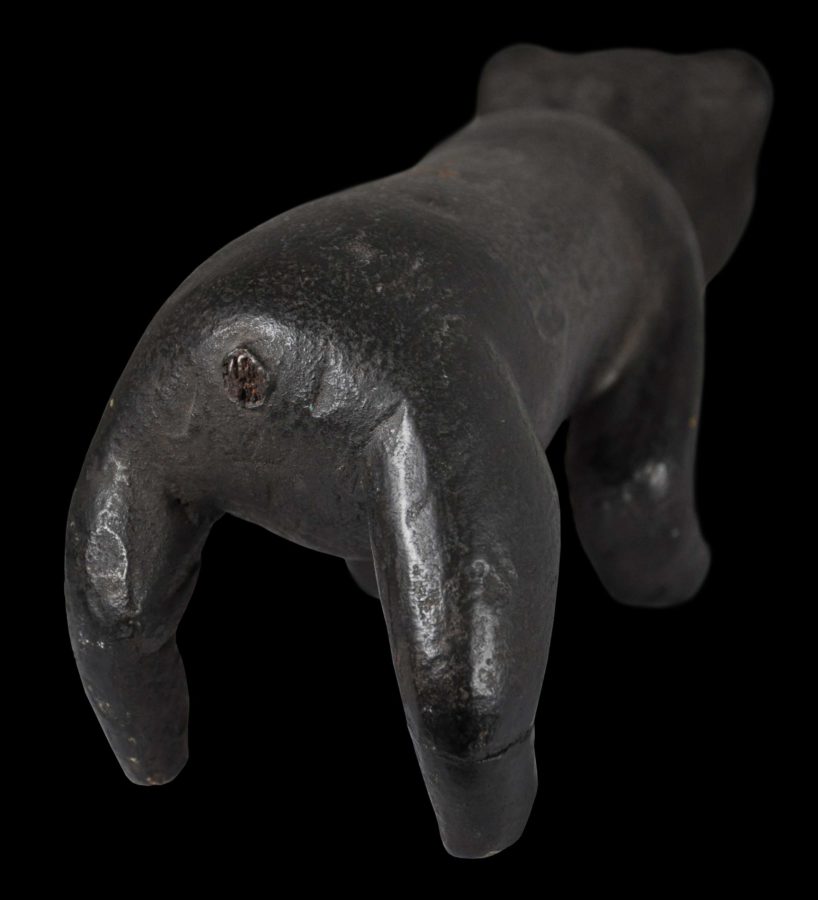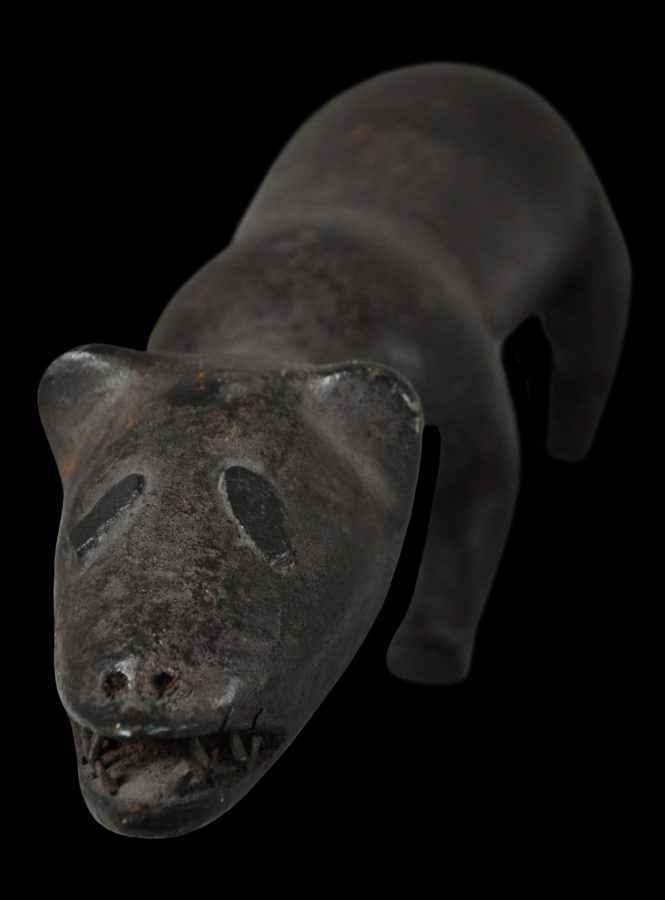Enquiry about object: 4326
Carved Wooden Dog Fetish Figure (Koso)
Vili People, Republic of Congo early 20th century
length: 24cm; width: 7cm and height: 8cm
Provenance
Estate of the London collector, Seward Kennedy, London
This is a dog sculpture from the Vili People, a Central African ethnic tribe that lives in the area formerly known as the Kingdom of Congo. Its head is unusually elongated. Its nostrils are pierced. Its mouth is slightly open to reveal two rows of sharp teeth made of iron. It stands on the four legs, slightly bent on the front legs, as if ready to leap forward to catch its prey. The eyes are inset with what is probably iron. The tail no longer is present; the loss is old and the area itself now has a fine patina.
This dog is called Koso, who mediates between the living and the dead (Bacquart, 1998). It is also well-known for its ability to move swiftly to track down evil forces (Roberts, 1995).
Sculptures such as this are called nkisi, which are often used in nail fetishes. They represent spirits, or objects that a spirit inhabits. They are made in various forms depending on their function, varying from detecting wrongdoing, enforcing oaths, to among other things identifying cause of sicknesses. Most of these sculptures carry magical substances on the head or abdomen. A medium, known as the Nganga, invokes the spirits from the world beyond by chanting, making noises, flaming torches around these sculptures and ultimately nailing them. Nkisi that have been nailed are called “nail fetishes” nkondi, which were widely collected in the nineteenth century and cited in travel writing, museum catalogues, and art history literature.
This dog figure remains a nkisi figure, as it has been spared from any nailing. Overall, it has a fine patina.
References
Bacquart, J. B., The Tribal Arts of Africa, Thames & Hudson, 1998.
Roberts, A. F., Animals in African Art: From the Familiar to the Marvelous, Prestel, 1995.
Sotheby’s London, Important Tribal Art, Page 105 Lot 234, 29th June 1987.


